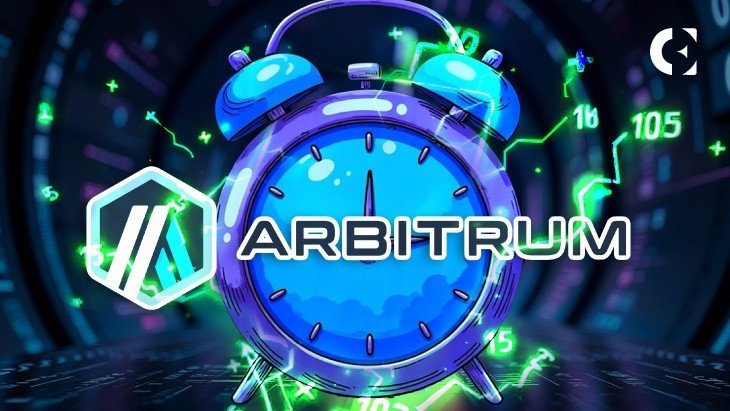The Arbitrum project has introduced Timeboost, a novel approach to organizing transactions, on its Arbitrum One and Nova networks. This system introduces ‘express lane’ bidding to expedite transaction processing while maintaining the network’s mempool privacy.
Simultaneously with the launch of Timeboost, Arbitrum unveiled Converge – a new blockchain tailored for tokenized real-world assets (RWAs) and decentralized finance (DeFi). These developments signify a significant stride in Arbitrum’s infrastructure expansion amid escalating activity across Ethereum Layer 2 solutions.
Timeboost is now operational on Arbitrum One and Nova.
This innovative transaction ordering mechanism enables users to bid for express lane access, delivering quicker transaction inclusion while upholding Arbitrum’s private mempool.
Why it’s important. 👇 pic.twitter.com/NpYwRwGL8s
— Arbitrum (@arbitrum) April 17, 2025
How Does Arbitrum’s Timeboost Operate?
With a focus on Timeboost, this fresh approach empowers users to bid for expedited transaction processing on Arbitrum One and Nova, aiming to reduce network delays. Instead of fostering speed competitions, the system offers an optional express lane for bidders. Arbitrum asserts that this framework maintains the mempool’s privacy, mitigating risks like front-running and sandwich attacks prevalent on public blockchains.
Besides transaction ordering, Timeboost also generates a new revenue channel for the Arbitrum DAO, the project’s governing entity. By aligning priority with bids, the network strikes a balance between speed, efficiency, and user privacy.
What Sets the Converge Blockchain Apart?
Arbitrum’s ecosystem has broadened with the introduction of Converge, a fresh blockchain collaboratively developed by Ethena Labs and Securitize. This platform is tailored to facilitate transfers and processing for RWAs and on-chain finance. At launch, a total of $7 billion in assets will transition to Converge: $5 billion from Ethena’s USDe synthetic dollar reserves and $2 billion from Securitize’s tokenized assets.
Instead of relying on a volatile native asset for transaction fees, Converge will utilize stablecoins, particularly USDe and USDtb, to maintain consistent gas costs. This strategy aims for precision and affordability for businesses engaging with tokenized assets.
Transactions on Converge will settle on Celestia, while Layer 1 will oversee stablecoin and NFT transfers. The blockchain will commence with 100-millisecond block times, with enhancements planned to reduce this further to 50 milliseconds.
For security and development, validators on Converge will stake sENA, a staked variant of Ethena’s native token. Additionally, developers will benefit from the forthcoming Stylus upgrade, enabling smart contracts in diverse languages such as Solidity, Rust, C, and C++.
Disclaimer: The information provided in this article is for educational and informational purposes only. It does not constitute financial advice or any form of advice. Coin Edition holds no liability for any losses resulting from the use of the content, products, or services mentioned. Readers are advised to exercise caution before taking any actions related to the company.

